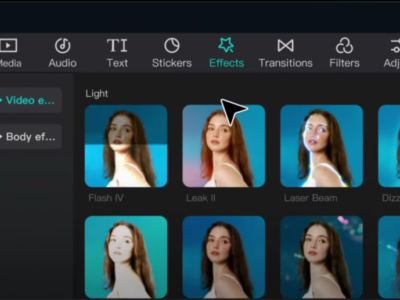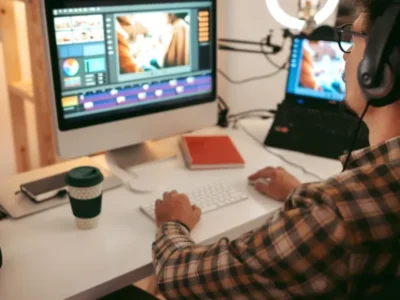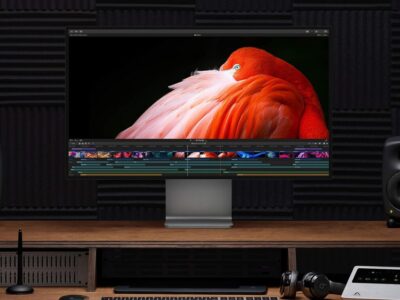Welcome to your exploration of the mesmerizing universe of film composition and framing! These are the clandestine elements that elevate movies from good to great. As the artist wields the camera, determining what the audience sees and feels, the potency of composition in film is unparalleled. It’s akin to crafting a visual masterpiece, where each scene narrates a tale, and every shot holds significance. Proficiency in these skills is pivotal—an art of cultivating a discerning eye for on-screen aesthetics, infusing vitality into narratives, frame by frame.
Now, let’s delve into unraveling the secrets of these techniques and unveil how they possess the enchanting ability to transform your creative visions into cinematic enchantment! Explore with us as we demystify what is framing in film and discover its transformative power in storytelling.
“FILMMAKING IS THE ULTIMATE TEAM SPORT.”
– Michael Keaton

Basics of Composition in Film
What are film composition and framing? In simple terms, it’s all about how you arrange the visual pieces in a scene to weave the best story. It’s like setting up a stage, guiding your audience’s attention to just the right spot. Consider your screen is divided into nine equal parts. Placing your main subject off-center, at one of these dividing lines, makes the scene more engaging. Then, there’s the use of leading lines, like roads or fences, which guide the viewer’s eyes into the scene.
Depth is another key element – creating a sense of distance between the foreground and background. And let’s not forget balance, which keeps the scene from feeling too cluttered or too empty. All these elements work together in film composition and framing to make your story stronger, guiding the viewer’s attention and emotions just where you want them.
The Art of Framing in Film
Framing in film is like choosing the perfect window to view a scene. It’s all about how you position your camera to capture the action. This choice can change how viewers feel about a scene. For instance, a close-up shot brings us right up close to a character, letting us catch every emotion on their face.
It makes us feel connected to them. A medium shot, which shows a character from the waist up, is great for conversations. It gives us a good view of their expressions and some background. Then there’s the long shot, which shows the whole scene. It’s perfect for setting the stage and showing where the action happens. To get really creative, try using things in your scene, like trees or windows, to frame your shots. Or play with angles – look up, look down, go sideways. These tricks make your film more interesting and draw your audience right into the story.
Composition in Film: Advanced Techniques
Now let’s talk about some advanced techniques like symmetry, asymmetry, and the use of space. Symmetry is when both sides of your scene mirror each other. It’s great for creating a sense of order and beauty. Think of those perfectly balanced shots in “The Grand Budapest Hotel.” Asymmetry, on the other hand, is all about unevenness. It can make a scene feel more dynamic and interesting. Like those off-center shots in “The Dark Knight,” which add to the film’s tense mood.
Then, there’s the clever use of space. How you place your subjects in a scene can say a lot. A character alone in a large room might seem lonely or lost, while a crowded scene can feel chaotic or energetic. Directors use these techniques to set the mood and tone, guiding how we feel about a scene without us even realizing it. It’s like visual storytelling at its best!
Film Composition Examples
Within this FREE PDF, you will discover:
- film composition examples in movies
- how filmmakers employ composition techniques
- how to create unforgettable cinematic experiences

Practical Application of Film Composition and Framing
Now, let’s get practical! Getting the hang of setting up a scene with top-notch composition and framing is pretty straightforward once you grasp the basics. Start by figuring out the star of your scene. Is it a person, an object, or perhaps a particular action? Make sure this key element stands out. You can use light, color, or position it in the frame to draw the viewer’s eyes right there.
But watch out for a few common slip-ups. Avoid cluttering your scene with too many objects; it can confuse viewers about where to look. Be careful with cutting off important parts of your subjects, like the tops of their heads. And remember, not every shot needs to be super dramatic. Sometimes, simplicity is the key to a powerful scene.
By focusing on these tips, you can create scenes that look professional and tell your story effectively. It’s all about practice, so don’t be afraid to experiment and learn from each shot you take.
Composition in Film and Framing for Aspiring Video Editors
If you’re on the path to learning how to become a video editor, becoming proficient in film composition and framing is like to discovering a hidden map. These skills are your key to understanding the magic behind a great scene. As an editor, your role often involves selecting the right shots and fitting them together like puzzle pieces. A solid grasp of composition and framing empowers you to pick the shots that best narrate your story, captivating your audience every step of the way.
Key skills include understanding balance in a scene, knowing when to use different types of shots, and how to create rhythm and pace with these shots in your editing. It’s also about feeling the emotion of a scene and using it to guide your editing choices. Remember, great editing is invisible; it feels natural and keeps the audience hooked. So, learn these skills, practice them, and watch as your editing turns each film into a captivating story!
Film Composition Examples
Within this FREE PDF, you will discover:
- film composition examples in movies
- how filmmakers employ composition techniques
- how to create unforgettable cinematic experiences

Composition in Film Examples
Rule of thirds
The rule of thirds is a fundamental principle in cinematography and photography that helps create visually appealing compositions. It involves dividing the frame into a grid of nine equal sections, formed by two horizontal and two vertical lines, resulting in four intersecting points. Instead of placing important elements in the center of the frame, the rule suggests positioning them along these grid lines or at their intersections.
This technique is not limited to medium shots; it can also be applied to close-ups. For example, when framing a close-up shot, you can position your subject’s eyes along the top line of the grid, ensuring that key details fall near the intersecting points. This helps create a balanced and dynamic composition that draws the viewer’s eye to the most important elements in the frame.
Before applying the rule of thirds, it’s essential to consider the story you’re trying to tell with your image. Think about what you want to convey to the audience and how the composition can help communicate that message. Are you highlighting a key detail? Suggesting a relationship between characters? Creating suspense with negative space?
When framing a shot, consider how the composition informs the audience’s understanding of the story. Will the placement of elements reveal new information? Will the camera be in motion? These are all important factors to consider when applying the rule of thirds.
To use the rule of thirds, simply place the grid over your shot, either mentally or using the grid overlay feature on your camera or smartphone. Then, position your subject or points of interest along the grid lines, ideally with key details falling near the intersections. This creates a sense of movement, depth, and visual interest, making the shot more engaging and visually pleasing.
Whether you’re shooting portraits, action sequences, or scenic landscapes, the rule of thirds is a versatile tool that can enhance the composition of your shots. It’s a simple yet effective technique that can help you create visually stunning imagery that resonates with your audience.

Pyramid
Split Screen
The split screen technique in cinematography involves dividing the screen into multiple sections, each displaying different content simultaneously. In its more recognizable form with clear borders or separations and different actions on the screen, a split screen will be used to juxtapose separate actions in the same frame. These can be complementary or contrasting, humorous or tense. The split screen immediately draws attention to itself. It’s a technique that signals a certain stylization and, by its very nature, divides our attention between multiple frames. Because of this, split screens are often used sparingly.
Split screens are a powerful storytelling device that can add depth and complexity to a scene. By showing multiple actions or perspectives simultaneously, they can provide insight into different characters’ experiences, highlight parallels or contrasts between different storylines, and create a sense of tension or urgency.
However, because split screens divide the viewer’s attention, they must be used judiciously. Overusing split screens can overwhelm the audience and detract from the narrative flow of the film. Therefore, filmmakers typically reserve split screens for moments when they want to make a significant impact or convey a specific message.

Golden Ratio
The Golden Ratio, often referred to as φ (phi), is a mathematical constant that represents a special proportion found in nature and art. It is approximately equal to 1.61803398875 and is denoted by the Greek letter phi. As a mathematical and artistic principle of mythical scale, the Golden Ratio is often misunderstood and mislabeled. DNA helixes, Renaissance art works, ancient architectural designs, and even fruits have all been observed as taking on the golden ratio. So what is the Golden Ratio exactly? When was it discovered and what is its influence on art and design? Let’s dive in.
Discovered by ancient Greek mathematicians, the Golden Ratio has been celebrated for its aesthetic appeal and harmonious proportions. Many describe the ratio as the most pleasing proportions to the human eye. Thus, it is incorporated into much of man-made design such as architecture and art, but it can also be found in the natural world.
In cinematography, the Golden Ratio plays a crucial role in creating visually captivating compositions. One key application of the Golden Ratio in film is in framing shots, particularly when focusing on the eyes of a character. The height of the frame is often divided according to the proportions of the Golden Ratio, creating the ideal placement for the eyes within the frame. This composition technique not only enhances the visual appeal of the shot but also helps to draw the viewer’s attention to the character’s gaze, intensifying the emotional impact of the scene.
By aligning key elements within the frame according to the Golden Ratio, cinematographers can create compositions that are visually balanced and aesthetically pleasing. Whether it’s framing a character’s face, capturing the sweeping landscape, or composing a dynamic action sequence, the Golden Ratio serves as a guiding principle for achieving cinematic excellence.
In summary, the Golden Ratio is a fundamental concept in cinematography, influencing the composition of shots and enhancing the visual impact of films. By understanding and incorporating this timeless principle into their work, filmmakers can elevate the artistic quality of their storytelling and create immersive cinematic experiences for audiences.

Centered

Composition in Film Conclusion
Embark on a captivating journey into the intricate world of film composition, where we’ve traversed the spectrum from fundamental principles to more advanced techniques. This nuanced art form is not just a skill set but a creative toolkit at your disposal for fashioning visually compelling narratives. As you navigate the landscape of composition in film, consider each frame as a canvas, offering a myriad of possibilities to express a story uniquely.
Begin by mastering the basics – the rule of thirds, framing, and the delicate balance of visual elements within the frame. These foundational elements lay the groundwork for your cinematic endeavors. Progressing to more advanced techniques, experiment with unconventional framing, play with depth of field, and explore the subtle nuances of color theory. The dynamic interplay of these elements cultivates a language unique to each filmmaker.
It’s essential to view every shot not just as a moment frozen in time but as a vessel for storytelling. Each frame is an opportunity to evoke emotions, convey meaning, and immerse your audience in the narrative you wish to unfold. Through the lens of what is framing in film, you wield the power to guide the viewer’s gaze, emphasize key elements, and ultimately shape the visual and emotional impact of your cinematic creation.
So, as you venture into the realm of film composition, embrace the creative journey. Try out various strategies, observe the interplay of light and shadow, and capture the essence of your narrative in each meticulously framed shot. Your evolving skill set in composition in film is not just a tool – it’s a language waiting to be spoken through the visual poetry of cinema. Each frame becomes a brushstroke, contributing to the larger canvas of your storytelling prowess.
Explore related content

Video Editing Tips CapCut: Tips, Tricks, and Techniques
Video editing is an art, and there are proper tools and techniques, through them everybody… Read More »Video Editing Tips CapCut: Tips, Tricks, and Techniques

Factors to Consider Before Buying a Video Editing Computer
From helping grow your brand and business to editing just for fun with the love… Read More »Factors to Consider Before Buying a Video Editing Computer

Best Video Editing Monitors in 2024
In the evolving world of video production, the importance of a high-quality monitor cannot be… Read More »Best Video Editing Monitors in 2024
